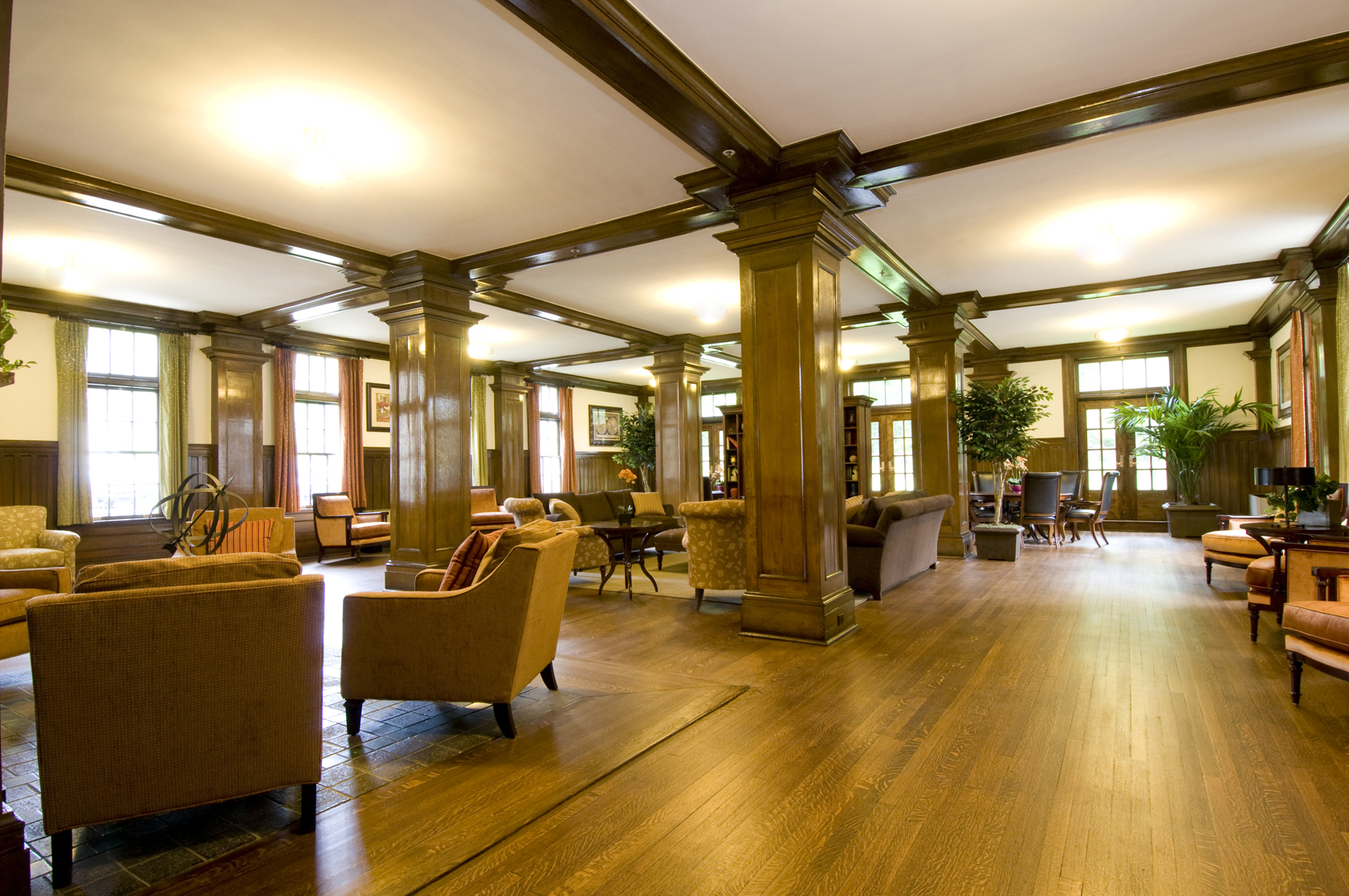Senior Living Interior Design Trends
Nov 10, 2016
Senior living interior design
In the past, the thought of senior living interior design created visions of forced conformity and artificial elegance in my head. Fluorescent lights humming above a gray, Spartan lobby welcoming me with plastic plants and heavy fabrics.
As designers, we know senior living interior design means more than double-rub counts and bleach-friendly fabrics. Oh sure, those are considerations right up there with seating height and armrests. But the active adults of today have a different set of habits than those of even a decade ago.
Let’s take a look at some of today’s senior interior design trends. Some are common sense, others are industry innovations. All are important for your facility or development to consider.
Multipurpose spaces
As time passes, there’s always a need to convert open spaces to accommodate activities and special events. These gatherings should be done with minimal disruption to the community. These open areas offer more than a multipurpose use, they encourage engagement. Furnishings are ADA compliant and accommodate both residents and guests comfortably. Best of all, these spaces allow for flexible use for years to come.
Hospitality features
This is a trend worth noting. Emulating the hospitality feel of a hotel begins with great interior design. Most people identify hotel-like engagement and service with quality. While hospitality is a standard high rise characteristic, it’s a growing demand at senior living communities. Not only do the residents appreciate it, it’s also an important aesthetic of branding an aging-forward community.
Natural light
Saturated, white light in senior living interiors is pure, common sense. With this in mind, it doesn’t have to be cold or unnatural. Using lighting in ways that enhances safety and well-being is divine. Employing natural light as part of the interior design is a therapeutic feature with a long, proven record. Nothing supports a person’s circadian rhythm better than the Sun. For senior residents with memory care needs, this is a vital consideration.
Outdoor colors and elements
Bringing the hues of nature indoors has a positive, mood-elevating effect on residents. Combining natural colors with raw wood and stone design elements give warmth and texture to a room. This is especially relevant for memory care patients and residents with mobility restrictions. In fact, a well-planned palette can not only enhance a room’s appeal, but it can also create a sense of calm and happiness.
Wireless connectivity
With many residents familiar with more than a TV remote, technology has to be a major consideration when planning senior living interiors. Increasingly, smart devices and social media are part of the older generation’s daily habits. With this in mind, providing an easy Wi-Fi connection and charging stations with flexible and comfortable furnishings are essential.
Pet considerations
Pets not only enrich some resident’s lives, but in many cases they are as important as family. More often, senior living developments are including such interior amenities as pet salons. Seniors with pets are likely to choose a residency based on pet considerations and allowances.
It’s important to realize, as our population ages and our world is more accessible, interior design plays a tremendous role in our well-being; particularly with seniors. This is why the interiors are the most important consideration of a senior living project. Look for an interior design group with experience in senior living interior design and multifamily interior design. Missing the mark with today’s senior trends will give the advantage to competing developers who provide the interiors that active adults need.






